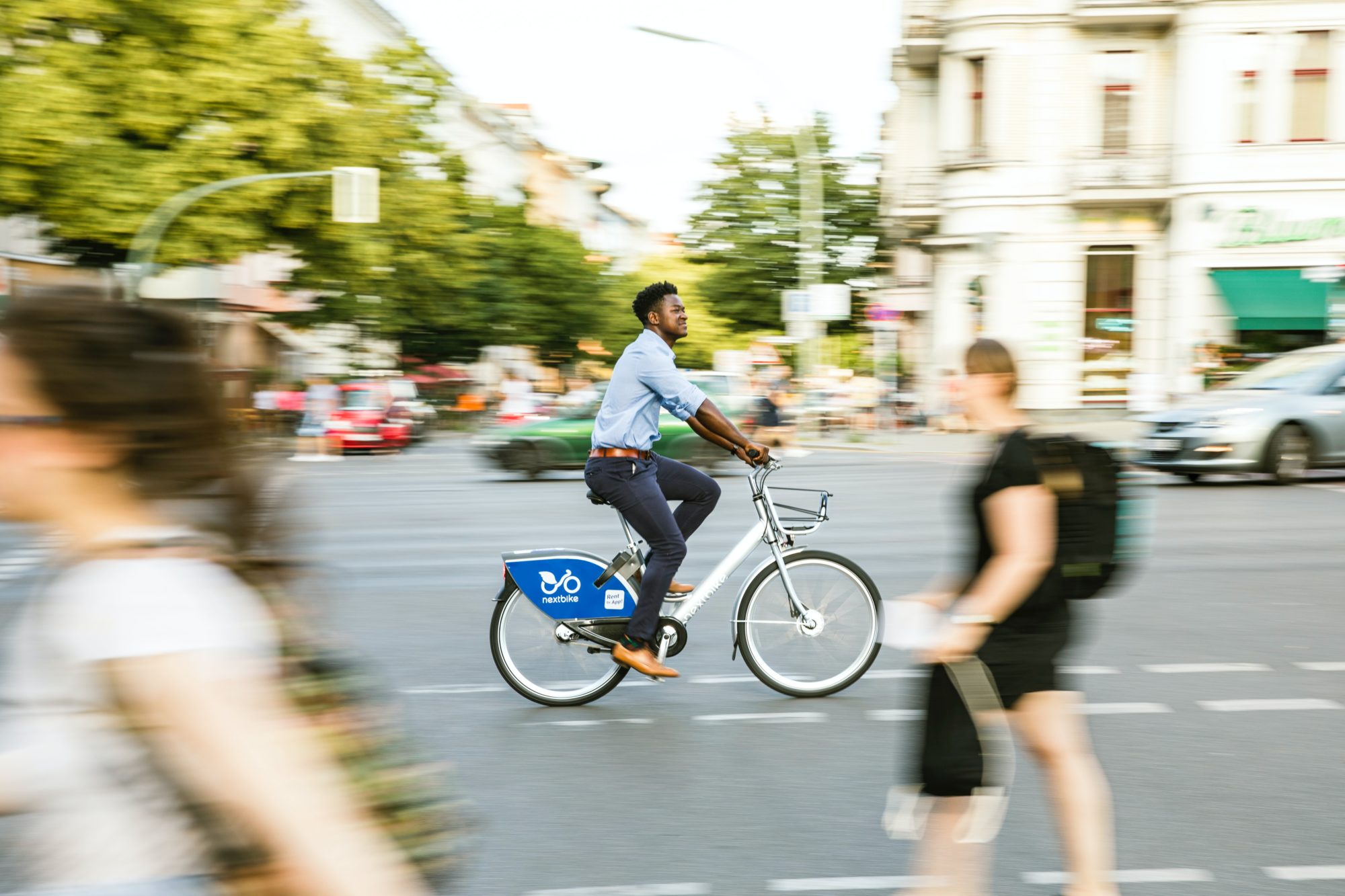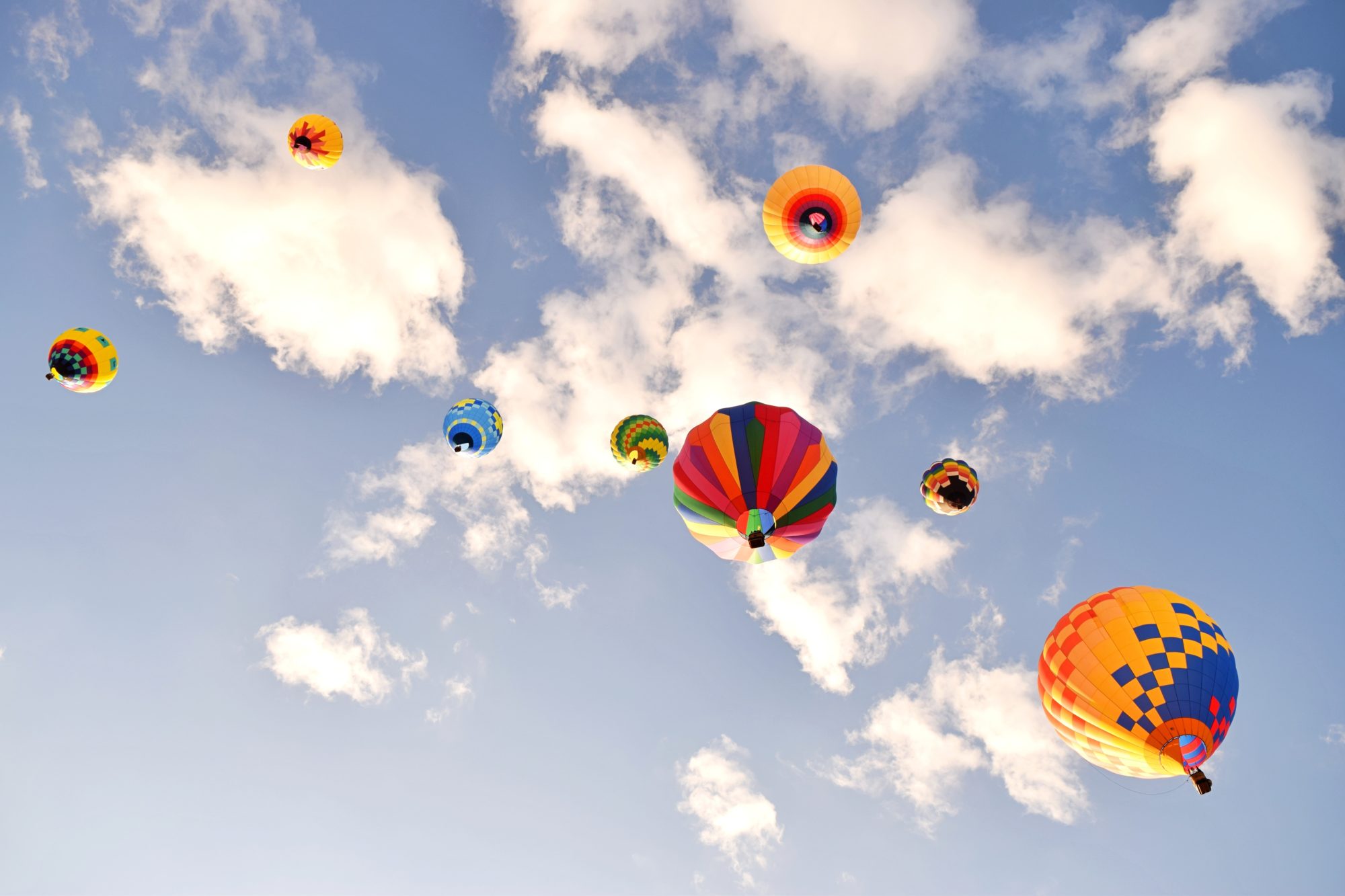Hey, Utahns—stop driving your car
Even before the 2020 pandemic, many Utahns were familiar with wearing masks outdoors. During the winter months, the inversion—a thick haze of pollution that blankets the skies above—makes it harder (and more dangerous) to breathe.
Looking outside after a big snowstorm may lead you to think that the inversions are getting worse, but officials in the state say air quality has improved leaps and bounds.
“There are a lot of players involved in the air quality in Utah,” says Becky Close, the environmental program manager for the state of Utah’s division of air quality. “But over the last 20 years, we’ve been able to reduce emissions with the low-hanging fruit—excess emissions from refineries and factories.”
Refineries and factories are considered “major point sources” of hazardous air pollutants, and Close says legislation passed under Governor Hebert helped make their operations safer and control emissions floating into the air.
“We’ve done a ton of work with them to limit the pollutants produced,” she says. “And while still large, their piece of the pie has gotten much smaller.”
That still leaves the rest of the pollution pie—and pieces that Close says are much harder to swallow.
“With the success of limiting major point sources, we’re seeing a spike in area source pollution,” she says. “When we say ‘area source,’ we’re talking about a very diverse pool of emissions. It’s your home, but it’s also business buildings downtown, shopping centers, and restaurants. Everything from your water heater to the University of Utah counts as an area source.”
“You can imagine all of these hot spots around the state releasing pollutants into the air,” she says. “It might be easier to manage if they were all the same kind of pollutant, but frying a burger versus dry cleaning clothes? It’s all types of chemicals being released into the air on every street corner.”
But even those widespread pollutants don’t rival their number one priority: individuals driving cars.
Baby, you (shouldn’t) drive your car
“Over 40 percent of our emissions come from mobile sources, most often our personal vehicles,” says Kim Frost, executive director of the Utah Clean Air Partnership (UCAIR). This 40 percent comes even after efforts in the state to adopt Tier 3 fuels, the growing popularity of electric vehicles, and grant programs run by the state to repair or replace cars that fail emissions inspections.
“Cars are still the biggest contributor to our inversions, during winter and otherwise,” she says. “Action needs to be taken before inversion sets in. That’s when we have the chance to make the greatest impact.”
UCAIR works closely with the Division of Air Quality, the Department of Environmental Quality, and other government offices and non-profits in the state to provide public education on air quality issues and help Utah breathe easier. And when it comes to cars on Utah roads, both organizations are on the same page: less driving equals less pollution. The numbers are on their side, too.

“By the end of 2020, we saw total emissions subside by 15 percent from the year before,” Frost says. “We believe that taking cars off the road was the main reason for that dip.”
Even with the studies and statistics, Close says overuse of personal vehicles is still a tough habit to break. “The reduction in refinery emissions, pinpointing area sources, and introducing cleaner fuel in the state have all done well to clean our air, and we’re proud of those successes,” she says. “But now, the progress is slower. While we knew that cars were a big driver of pollution, we’d found it difficult to limit their use. We must find new ways—or improve existing ways—to make leaving your car at home viable. If we want people to drive less, we also must make that a possibility.”
For years, both Close and Frost’s organizations pushed for individuals to be in the car less often, whether by carpooling or completing the day’s errands in one go instead of taking multiple trips. This was done with the knowledge that some traveling—like to school or work—couldn’t be limited.
Until it could, that is.
Working from home
Across the country, the Covid pandemic legitimized working from home for the masses. In Utah, however, bad air days had led some state employees to start investing in their home offices long before the rest of the world.
“Prior to the pandemic, we were testing the theory that working from home would positively impact the air quality in the state,” Frost says. “The Governor’s Office of Planning and Budget implemented the state’s remote work policy, where on forecasted ‘poor air quality’ days, eligible state employees would work from home. Then when the pandemic hit, it became a necessity.”
“We’re still tracking the data for the specific impact of that telework legislation, but anecdotally, I can tell you that state employees are taking advantage of the opportunity to work from home when needed,” she says.
Even though the state’s remote work policy doesn’t stretch to private businesses and organizations, Close says they’ve started to follow the government’s example.
“We’ve heard from other small businesses that they’ve implemented telework days for surge periods and that their employees have also participated,” she says. “We’re comfortable working from home now, and it’s clear that doing so leads to improved air quality. Essentially, any time you can take your car off the road, do it.”

Pushing for more public transit
If you still have in-person classes or just miss your cubicle buddies, Utah’s public transit teams are working to make ditching your car less of a sacrifice. They’re starting with transit marketing efforts like Free Fare February, where for the entire month, passengers can use the public transit—from the bus to the TRAX—for free.
“People were incredibly responsive,” Close says. “In just the first week, we saw a 20 percent increase of riders on weekdays, 34 percent increase on Saturdays, and a 27 percent increase on Sundays.”
While Close’s department doesn’t specialize in public transit, she says its accessibility and ridership play into every decision they make. “Free or reduced fare gives people a chance to change their behavior,” she says. “Which is exactly what we’re asking them to do by finding new ways to get around the city.”
And while it might not be able to replace cars, Close hopes that increased ridership will lead to more people in the state applying the “first-mile, last-mile” approach. “If you need to drive your car, we hope it’s to a TRAX or bus station, which you’d use to get to your final destination,” she says. “That’s something we want to see a lot more of in the coming years.”
Thinking about taking up biking? So is everyone else
The dark horse transportation solution may be on wheels after all—two wheels, in fact.
“We’ve had a doubling in the amount of people that bicycle,” says Ted Knowlton, deputy director of the Wasatch Front Regional Council. “Public transit saw a significant dip during the early days of the pandemic, which was predictable as people were worried about containing the viral spread. People were driving less, too. But bicyclists? That’s been a steady upward trend for years.”
Unfortunately, not everyone who owns a bike uses it to get to work or run errands. “We have tons of trips in this state that could be bikeable,” he says. “And we have tons of Utahns—70 percent—who say they want to bike more often, yet we’re still driving our cars.”
Why? Knowlton believes it comes down to bike safety.
“It’s been a chicken or the egg situation for our state,” he says. “People will ask, ‘Why should we build infrastructure to support bicycling if I don’t see tons of people biking every day?’ People are nervous to bike around cities, and that’s fair when it really is unsafe.”
Biking infrastructure includes things like bicycle storage centers or designated biking lanes. Something like a bike lane isn’t hard to insert into existing roads, Knowlton says—it doesn’t even have to be a permanent alteration.
“We can try this new infrastructure on a temporary basis,” he says. “We can put up cones to separate a ‘bike lane’ so it feels safer for the bicyclists without actually making a physical improvement.”
Efforts to protect bicyclists have limited upfront costs and also come with big monetary and health payoffs. “If we want more people to stop driving personal cars, ride transit, and do it cheaply, bicycling is the way,” Knowlton says. “Let’s say that Utahns are willing to walk a quarter of a mile to a transit stop. That severely limits the number of people who will get on the TRAX or a bus because they live too far away, right? But if they’d bike three miles, we’ve just tripled the number of people who think transit is a meaningful option for them, who wouldn’t have in the past.”
Planning the cities (and suburbs) of the future
No matter if you’re a walker, biker, public transit rider, or die-hard personal car fan, the success of limiting pollution relies on communities built to encourage these planet-friendly habits and hobbies.
The leading solution is “transit-oriented development,” where cities and towns build as many homes, apartments, businesses, and stores within walking distance of public transit as possible. That’s the method downtown Salt Lake City bought into, with new high-rise buildings popping up all the time.
“We’ve been implementing a smart growth plan,” Frost says. “Both in Salt Lake City and other cities like it throughout the state, we’re working to make it more walkable, with everything you’d need within a five-to-ten-minute walk of where you live—grocery stores, work, leisure.”
So far, it’s working. “In Utah, by far, downtown SLC is where we see the most people walking and bicycling,” Knowlton says. “Really, the number is just off the charts, and we’ve seen that in association with downtown’s growth and improved bicycle safety precautions. If we wanted more walking and bicycling in Utah, the easiest thing we could do is enable more people to live and work downtown. It’s an absolute no-brainer.”
There’s a hang-up to that plan, though: “Downtown living isn’t for everyone,” Knowlton says. “And that phrase, ‘transit-oriented development,’ sounds clinical. It isolates the suburbs and other existing types of communities in the state. It says to them, ‘You have to have killer transit systems in place, or you can’t be a walkable or bikeable place, you can’t drive less.’”
People living in the suburbs are also not drawn to the phrase “live where you work” like those who may choose downtown apartments might be.

“When we push that phrase, I think that gives suburbs an easy out, like, ‘That’s never going to happen here, so we’re not even going to try to make our community more walkable,’” Knowlton says.
People across Utah chose to push back against the cynicism, though, with a plan called Wasatch Choice Vision. “What’s unique about this approach is that it focuses on density, especially a mix of uses,” Knowlton says. “Every community—whether it’s a suburb or a huge city—can have a pocket of great walkability or more biking alongside cars that doesn’t entirely rely on where the buses are.
Wasatch Choice Vision doesn’t ask every area to turn into a bustling downtown, Knowlton says. Instead, it’s about building stores, schools, and offices where people already live and expanding public transit to where people actually want it.
It’s a 15-year-old idea that’s just now gaining traction, and Knowlton says it’s because of the unprecedented growth challenges in the state. “The level of commitment to changes like this has never been higher because the need for change has never been higher,” he says. “We’ve had the plan formalized and blessed by every city through the Wasatch Front Regional Council.”
That kind of mass buy-in is what people like Frost hope to see more across the state. “Our ultimate goal is to have less cars on the road,” she says. “The solutions may change and adapt over time, and we’re willing to implement what works to limit pollution caused by our cars.”
Close believes better air days might be just around the corner.
“It’s a hot topic now, the bad air quality in our state,” she says. “Everyone understands how important of an issue it is. We have the momentum to be able to talk about the problems we’re facing and answer with decision-making. It’s harder work, but we’re confident that we can find the right solutions.”
And to Knowlton, Salt Lake City is the perfect starting place for finding these solutions. “My belief is that as Salt Lake City continues on this trajectory of downtown growth, safer infrastructures, and expanded public transit, we’ll be seeing many other cities and towns follow their example,” he says. “Communities like Salt Lake are perfect trailblazers for what can be done—what people are able to do—to make the world easier to navigate.”

































